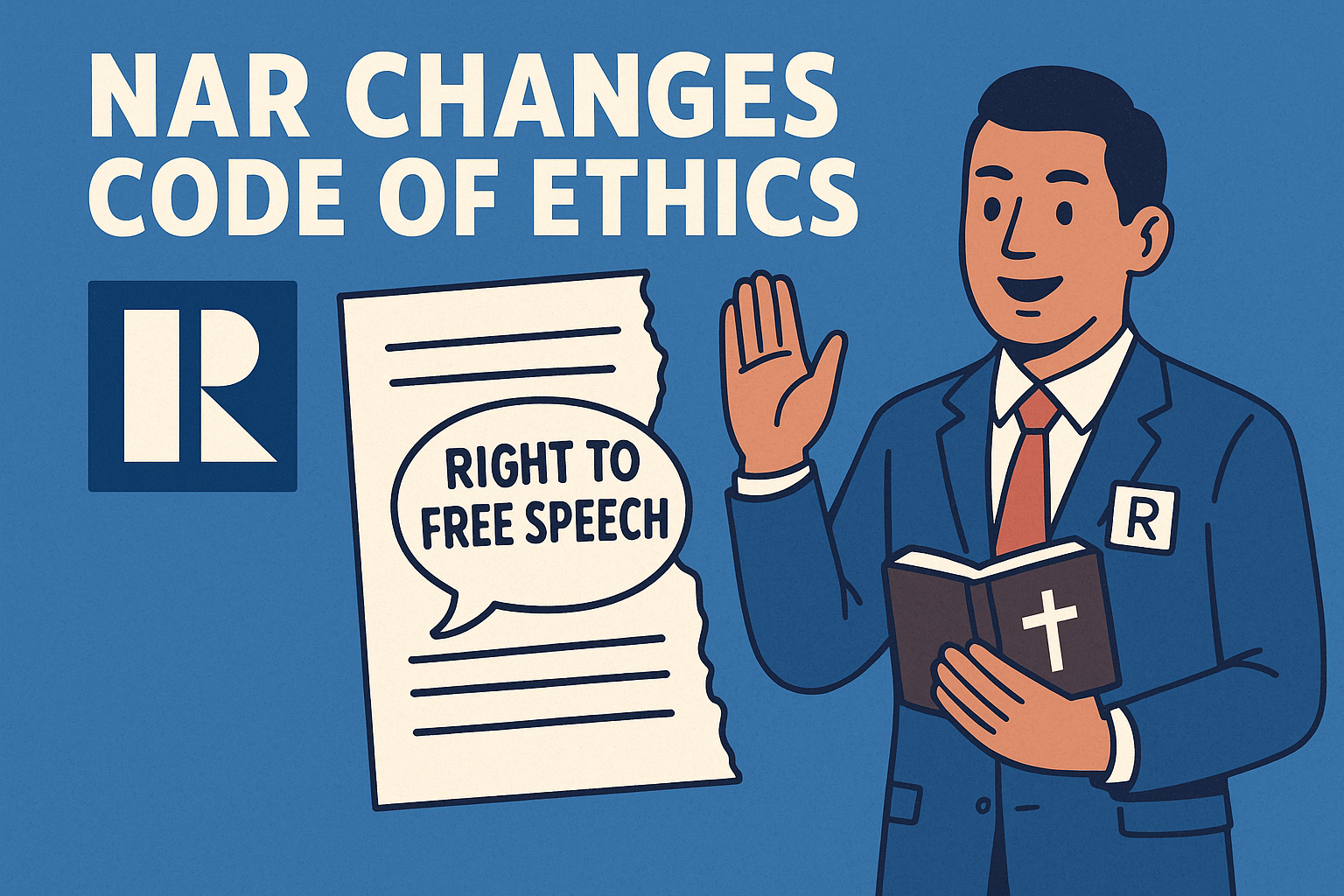
Just days after I wrote about the controversy surrounding NAR’s Standard of Practice 10-5 (SOP 10-5), the National Association of REALTORS® Board of Directors has officially ratified changes to the standard. As expected, the updates focus on clarifying the definition of “harassment” and narrowing its scope to only apply when REALTORS® are acting in a professional capacity.
This morning’s move at the REALTORS® Legislative Meetings in Chicago formalizes the proposed revisions that had been in the works since 2023. According to NAR President Kevin Sears, the aim is to better align Article 10 of the Code of Ethics with similar standards used by other large trade associations, while also easing enforcement for state and local associations.
NAR originally adopted SOP 10-5 in 2020 to prohibit REALTORS® from using harassing or hate speech based on protected characteristics. But over the past few years, enforcement has stirred up significant free speech concerns—especially in cases where members were disciplined for personal comments made outside of their professional real estate work. One notable example I mentioned in a recent article involved a Virginia REALTOR® and ordained minister who was found in violation after reposting a Bible verse on his personal Facebook page. You can read more about that case and the broader context here: NAR Reconsiders SOP 10-5 Amid Free Speech Concerns.
With these newly ratified changes, the definition of “harassment” now mirrors the NAR Member Code of Conduct and limits enforcement to a REALTOR®’s professional conduct. In short, NAR has put some guardrails around SOP 10-5 to reduce the risk of overreach—and hopefully strike a better balance between ethical standards and individual rights.
For many in the industry, this adjustment will be seen as overdue. It reflects what a lot of us have been saying for a while: the intent behind SOP 10-5 was solid, but the way it was worded left too much room for confusion and uneven application.
Now that the Board has made it official, we’ll see how this plays out in practice. But at least for now, it’s a step toward a clearer, more defensible standard.
